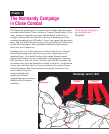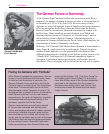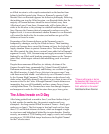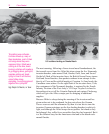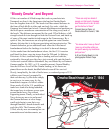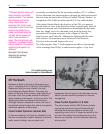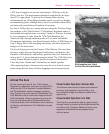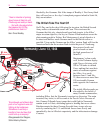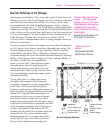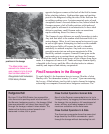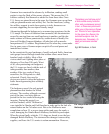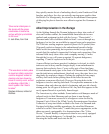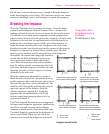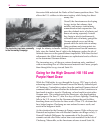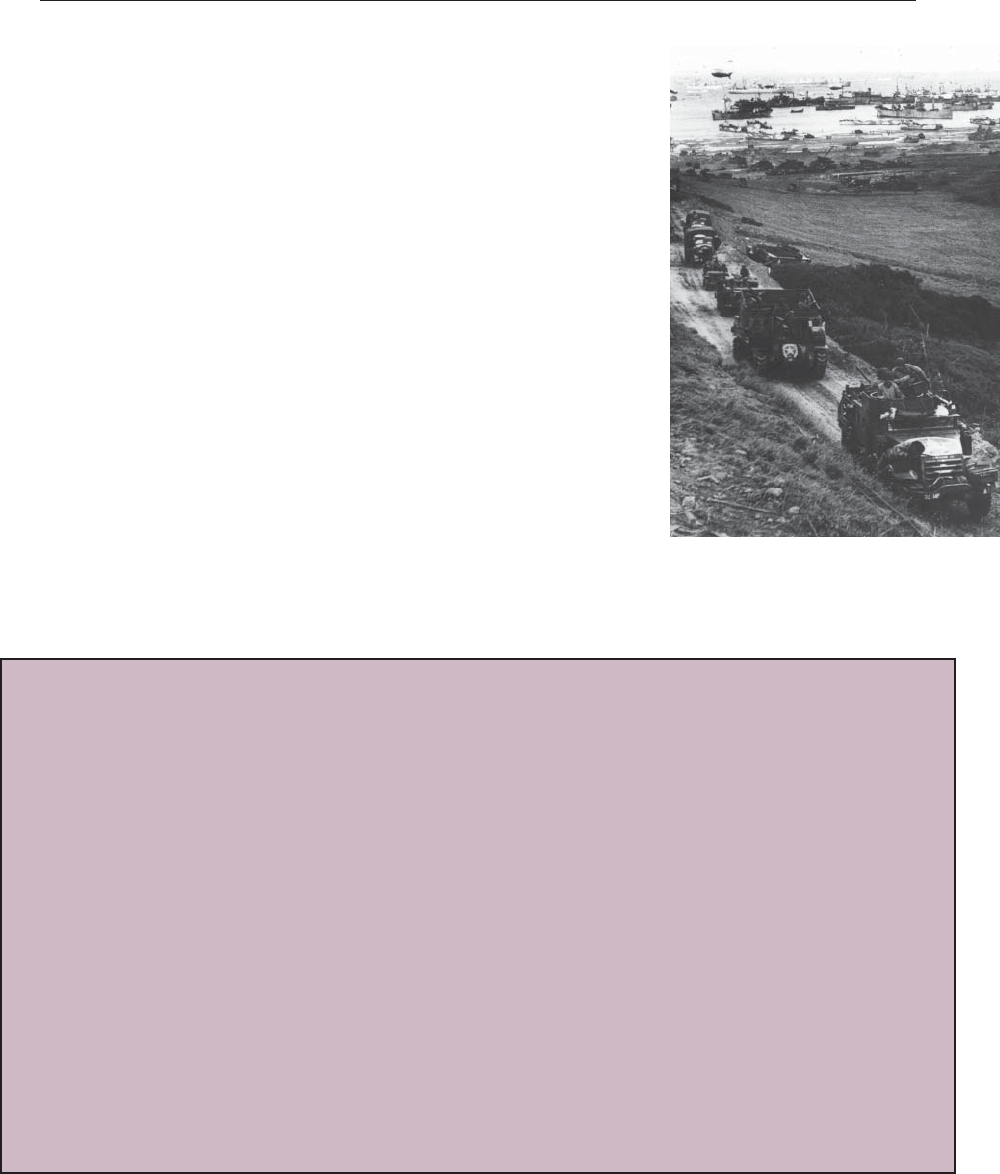
Chapter 4 The Normandy Campaign in Close Combat
73
1,429 tons of supplies are moved, increasing to 7,000 tons a day by
D-Day plus five. The paratroopers inland are resupplied by air drops
from U.S. cargo planes. To prevent the Germans from moving
reinforcements up, Allied fighter-bombers attack several river bridges
and marshaling yards, although heavy cloud cover hinders their efforts
and causes the cancellation of hundreds of missions.
By June 8, D-Day plus two, enemy defenses along the Trévières-Isigny
line collapse as the 29th Division’s 175th Infantry Regiment makes a
determined and rapid advance, covering 12 miles in 36 hours. Assisted
by two companies of tanks from the 747th Tank Battalion, the
Americans fight through antitank gunfire at La Cambe and mobile
88-mm guns and infantry near Saint-Germain du Pert. At 0300 hours on
June 9, Isigny falls to the onrushing Americans, who then capture the
bridge over the Aure intact.
The loss of Isigny prevents the German 352nd Infantry Division from
driving a wedge between Omaha and Utah beaches, and deprives the
Germans of the defensive and artillery positions they have counted on
to keep the U.S. forces from advancing far inland. The 175th Division’s
victory thwarts Rommel’s plan to stop the invasion on the beaches.
Three days later, Omaha and Utah beaches are linked together.
After capturing Isigny, American units cross the river Aure at various
points along the line, many of them slogging across areas previously
Allied supplies pour inland
from the Normandy beachhead
Across The Aure
On the morning of June 9, the 115th Infantry
Regiment is ordered to cross the river Aure. With
help from the 121st Engineer Combat Battalion,
the Third Battalion makes a swampy crossing
from Canchy to a point west of Colombieres. The
First Battalion tries to cross the bridge just south
of Ecrammeville. German machine gun and rifle
fire from positions west of Trévières drives the
Americans back; the First Battalion then marches
to Canchy and follows the Third Battalion across
the Aure.
Close Combat Operation: German Side
The German commander’s teams are bolstered
by armor and a deadly array of artillery, and
can make the bridge an obstacle instead of an
opportunity.
Close Combat Operation: U.S. Side
The American commander has an opportunity to
change history by capturing the bridge across the
river Aure near Trévières. Additional armor now
supports the American heavy weapons and
infantry teams.



